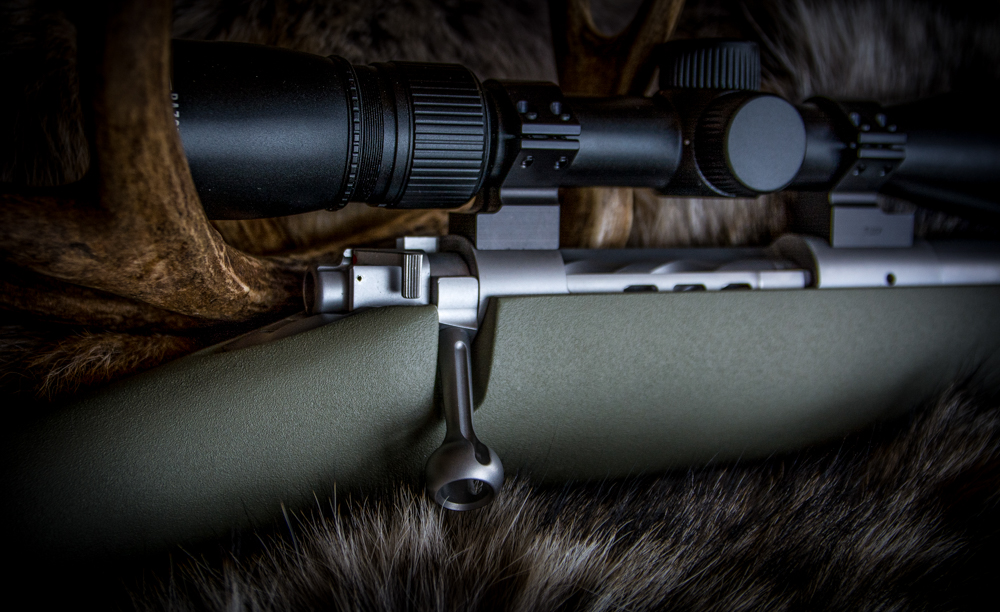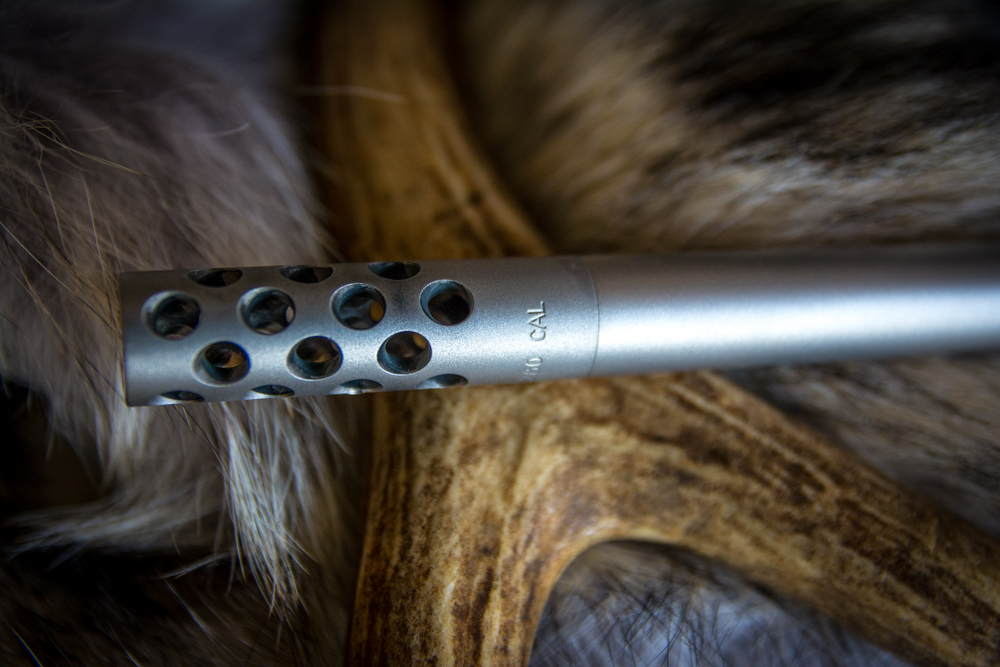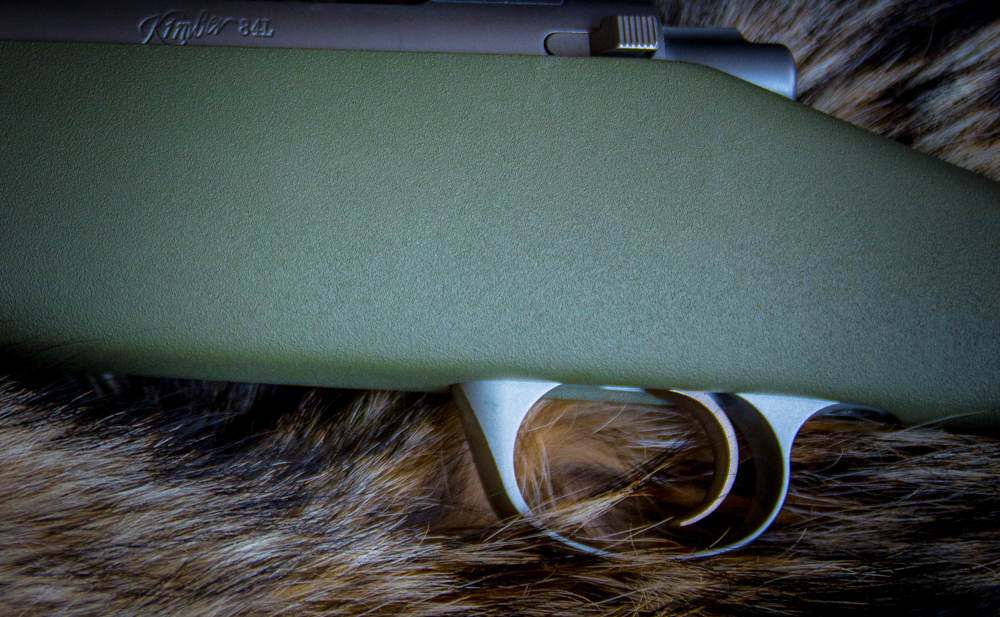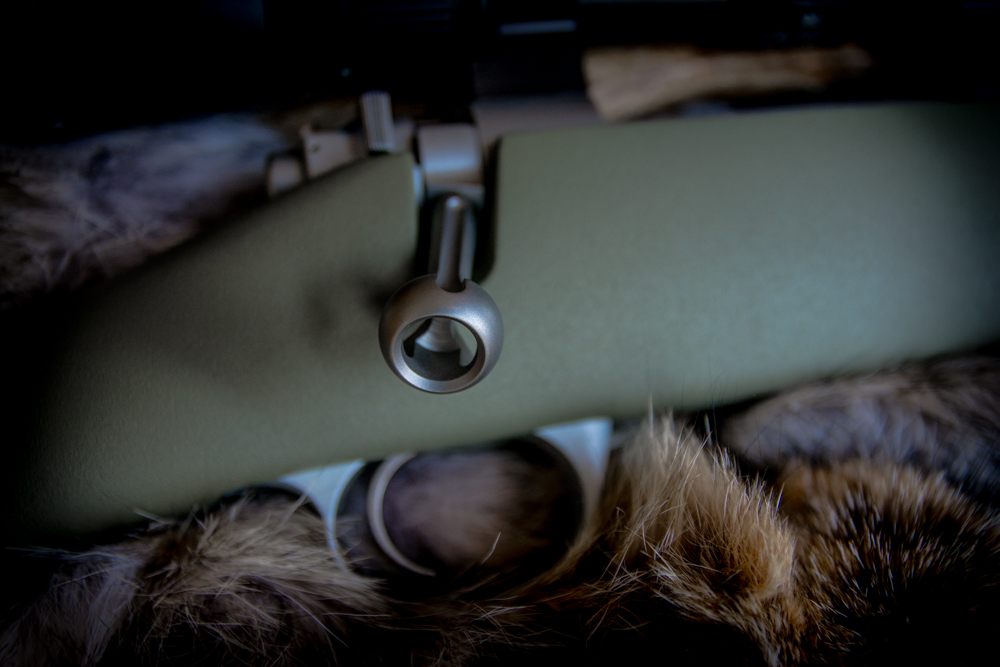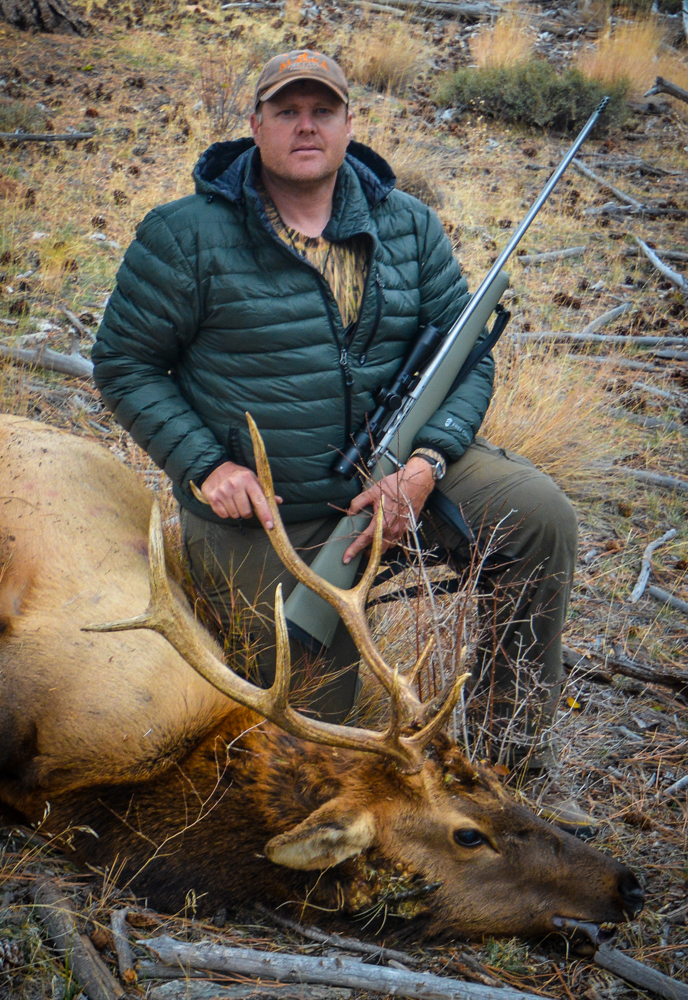Rifle Review: Kimber Mountain Ascent Leave a reply
by Jason Brooks
Being a backcountry hunter for the past thirty-plus years I have learned that weight is everything. Over the years I have hunted far from the trailhead and in the early years I started with an all-steel Remington Model 141 Gamemaster chambered in 35 Remington and topped with a weaver fixed 4X scope. That rifle package weighed over 10 pounds. Since then I have gone through a few different rifles trying to balance weight with accuracy and ballistics. I’ve never really found a rifle that I liked until I came across the new Kimber Mountain Ascent. The Kimber Mountain Ascent is the lightest bolt action hunting rifle in production today.
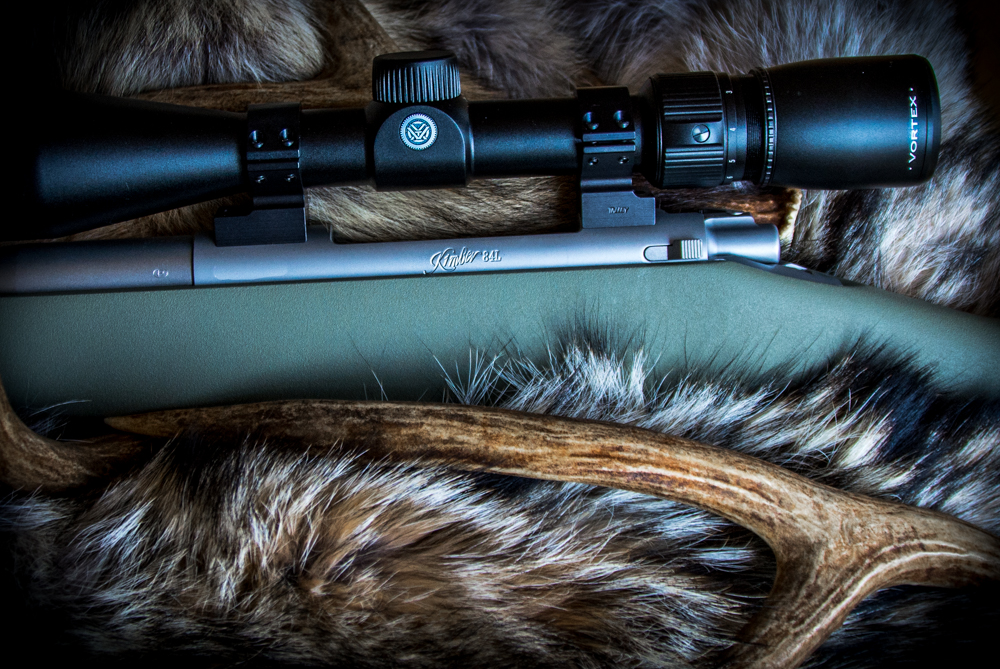
Kimber’s Mountain Ascent is a lightweight and extremely accurate rifle for the backcountry-Jason Brooks
My Kimber Mountain Ascent chambered in .280 Ackley Improved with a Vortex Razor HD LH 2-10x40mm scope weighs in at just over 6 pounds. I’ll review the re-emergence of the .280 Ackley Improved cartridge in another blog along with the new Razor HD Lightweight Hunter scope. I’m very impressed with both. So here is the lowdown on the rifle that packs light, shoots straight, and kills efficiently.
I chose the solid moss green stock for my Kimber Mountain Ascent because I just don’t care much for camouflage stocks. The moss green stock is made of reinforced carbon fiber that is extremely lightweight, resists scratching, and has texture so it stays solid in your hand on wet, cold days. If you prefer a camouflage stock Kimber has Gore Optifade “Open Country” and “Subalpine” stock options with soft touch finishes that are warm to the touch and grip easily.
The first thing I noticed about the rifle was the long barrel. Most “mountain rifles” come with either 20 or 22-inch barrels to save weight. In lieu of a short barrel Kimber flutes a very thin 24-inch barrel to give it strength and stability. The longer barrel offers higher velocities since the bullet has a longer path to travel and build pressure. It also increases accuracy as the bullet can stabilize with an extended distance in contact with the rifling. With the longer barrel there’s also less margin of error when it comes to pointing the barrel at your target.
However, this is a hunting rifle, not a range rifle, and after the second subsequent shot the barrel was warm to the touch. Three quick successive shots and the barrel was borderline hot. In a perfect world we make “one shot kills” but when an immediate follow-up shot is needed be aware of barrel heating. When sighting-in at the range adequate time is needed between groups to let the Kimber’s lightweight barrel cool down. I’d recommend practicing with this rifle at the range before taking it afield. It’s so lightweight that it may take you a few range sessions to get a feel for shooting it.
The larger-caliber Mountain Ascent’s comes with a threaded barrel and cap as well as a muzzle break. It’s your choice on which to use and they change out easily. I prefer the muzzle break since the rifle is very lightweight. Recoil can be an issue with any lightweight rifle and the muzzle break helps with this as does the with the pre-fitted Pachmeyr Decelerator pad that’s standard with the Kimber. My rifle doesn’t kick enough for me to worry about flinching as long as I used hearing protection, which is a must with a muzzle break. With the muzzle break the .280 Ackley Improved and the rest of the magnum calibers are a dream to shoot with the Mountain Ascent. Lightweight rifles certainly produce more recoil and the muzzle break attenuates that nicely.
Extremely lightweight rifles are often given a bad reputation for being inaccurate. This can be partly due to a heavy trigger pull and the shooter rocking the rifle or “rolling” their finger on the trigger instead of using a steady pull. Kimber is well aware of this and allows shooters who prefer a light trigger to make this adjustment easily. Each rifle is test fired before leaving the factory and Kimber guarantees sub-MOA accuracy.
My first range session had me wondering how this was possible. After realizing I was moving the rifle as I was firing it I looked up how to adjust the trigger. A couple bedding screws keep the action and free-floating barrel in the stock and two small set-screws on the trigger assembly adjust the weight-of-pull and trigger travel. It took me about five minutes from start to finish to adjust the trigger. Since then I have had sub-MOA accuracy with quality ammo every time I’ve shot the rifle.
The action has just about every ounce shaved off including hollowing the bolt handle and trimming down the action. The rifle will hold four rounds in the internal magazine but I had some difficulty trying to chamber a round when I put all four cartridges in the gun. Instead I would only put three rounds in the rifle and for the most part it chambers and cycles just fine. Again, think of this rifle as a “make the shot count” tool and you will have no problems.
The Kimber Mountain Ascent is an extremely accurate rifle that is easy to carry in the field, so “making the shot count” is not much of a problem. It took me one shot at 310 yards to kill a five-point bull elk in Idaho’s backcountry this past fall and I had no problem carrying the rifle back to camp with a heavy load of meat. With any lightweight backcountry hunting rifle I’m reticent to take shots beyond 400 yards and this rifle is no different.
The Kimber Mountain Ascent fits the criteria as a true mountain hunting rifle and in my opinion is well worth the price. If you’re looking to shave pounds or even ounces off your load on your next backcountry hunting trip this rifle should be at the top of your list.
Jason Brooks
The Outdoor Line Blogger
www.jasonbrooksphotography.com



